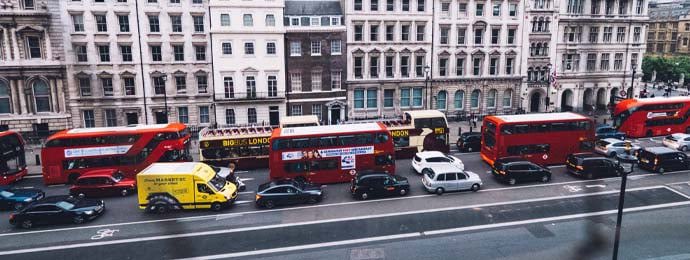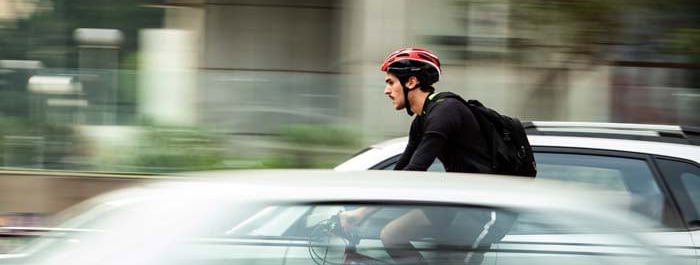New Highway Code rules for 2022
On the 29th of January 2022, The Department for Transport updated nine sections of The Highway Code, with 50 new rules being added or updated for road users.
The new measures are aimed to protect cyclists, pedestrians and horse riders when on or near UK roads. The updates also strive to make the roads safer for vulnerable users by creating a hierarchy that clearly defines pedestrian and cyclist priority and establishes safer overtaking practices.

As more people take to the roads, an increased number of accidents and collisions are happening. The following statistics highlight the importance of The Highway Code changes.
Despite the pandemic, in the UK during 2020:
- 141 cyclists were killed, and 4,215 were injured
- 80% of 1,010 horse incidents were caused by cars
- 1,460 fatal road accidents involving pedestrians
With this in mind, car leasing experts, Nationwide Vehicle Contracts, has compiled the eight fundamental changes introduced to the Highway Code and what they mean for road users.
What is the highway code?
The Highway Code is a set of information, guidelines and mandatory rules for road users in the UK to promote road safety. It applies to all road users, including drivers, motorcyclists, cyclists, pedestrians and horse riders. It provides information on road signs, road markings, vehicle markings, and road safety.
Many rules in the Highway Code are legal requirements, and disobeying them is a criminal offence. You may be fined, given penalty points on your licence, or a driving ban. In the most severe circumstances, you may be sent to prison.
The Highway Code is put together by the Driving Standards Agency and the Department for Transport. It was first published in 1931 and is available electronically and as a printed book. The Highway Code is regularly updated to reflect current practices. All motorists and road users must read and understand the guidelines set out within it, including pedestrians and cyclists.
“The new highway code changes are essential to the safety of all road users and pedestrians, so all motorists must keep up to date with the changes. Disobeying the rules can be a criminal offence that can lead to points on your licence, fines, driving bans and imprisonment in the worst-case scenario.”

What are the highway code changes for 2022?
Below we have listed eight key changes being introduced to the Highway Code and what they mean for road users:
Rule 1: Hierarchy of road users

A new hierarchy will be established to ensure the safety of the most vulnerable road users and lower the number of collisions on UK roads.
The new hierarchy when on the road:
- Pedestrians
- Cyclists
- Horse Riders
- Motorcyclists
- Cars/taxis
- Vans, minibuses, large passenger vehicles or courier vehicles, e.g. HGVs & buses
A concept known as the "hierarchy of road users" positions the road users who are most at risk for a collision at the top of the hierarchy. The obligation for everyone to act responsibly is still present despite the hierarchy while on the road.
Rule 2 - Give way to pedestrians waiting at junctions

Now, motorists must give way to pedestrians crossing a road or junction. Even if the pedestrian hasn't started crossing the road, motorists must give way to those who are waiting.
Motorists, cyclists, and motorcycle riders should give way to pedestrians while approaching a zebra crossing. At a parallel crossing, motorists should give way to cyclists and pedestrians.
Rule 3 - New guidance on shared spaces between pedestrians, horse riders and cyclists

Those operating a horse-drawn vehicle, walking, or riding a horse should be aware of their surroundings and the safety of pedestrians.
Cyclists are asked to avoid passing pedestrians and horse riders at a fast speed or nearby. They are also instructed to use their bell to signal their presence and slow down, when necessary, but to keep in mind that people may be deaf or partially sighted. New rules also mean cyclists must not pass on the left-hand side of a horse.
Rule 4 - New cyclist positioning on the road

Cyclists must now ride in the centre of their lane whilst cycling on quiet roads with slower-moving traffic and when approaching junctions or road narrowing. While cycling on roads, bike riders must maintain a distance of at least 0.5 metres from the curb edge when vehicles travel faster than them. When cycling past parked vehicles, cyclists should keep a one-metre distance and be aware of pedestrians who may cross their path.
Cyclists who are cycling in groups can now cycle two abreast. However, they must allow cars to overtake them when it is safe to do so.
Rule 5 - Safer overtaking when driving

When driving a vehicle, you can now cross a double white line if necessary, and the road is clear to overtake a horse or cyclist travelling at 10 mph or less.
When overtaking cyclists, 1.5 metres minimum must be left between the vehicle and cyclist to give them more space. When passing horses, motorists must leave at least 2 metres of space. Drivers should provide a gap of two metres between their vehicle and any pedestrians walking on the road (no pavement), and speed should be dropped.
Rule 6 - Cyclist's priority near junctions

Cyclists are encouraged to use the small cycle traffic lights to make their ride safer. If cycling on roads that do not have this facility, it is advised that cyclists behave as though they are driving a car and, therefore, should be as visible as possible and avoid overtaking where they feel it to be dangerous. Additionally, cyclists now have the right of way at intersections when travelling straight.
Rule 7 - Priority when at roundabouts

Drivers of cars, motorcycles and other moving objects shouldn't try to pass bicycles in their lane at roundabouts, and they should also let them cross the intersection while turning.
When at a roundabout, drivers of cars, motorcycles, and other moving objects shouldn't attempt to overtake people cycling within their lane and should also allow cyclists to move across the roundabout when travelling around.
Rule 8 - Charging, parking and leaving vehicle changes

When opening doors, the new method is called "Dutch Reach." Now, drivers and passengers should open their car doors using the hand opposite to the side of the door they are opening. For example, using your right hand to open a door on the left-hand side of the car. This reduces the risk of injury to pedestrians, motorcyclists, and cyclists because the person opening the door is glancing over their shoulder.
Owners of electric vehicles should now park close to the charging station when doing so to prevent people from tripping over cables. If possible, they should also display a warning sign and return any charging cables to reduce danger and obstacles to other people.
How is the highway code enforced?
There won't be any changes to the law, but the Highway Code has been updated to increase road safety for vulnerable road users. The highway code rules are advisory, meaning a person won't be prosecuted for not complying with them.
However, under the Road Traffic Act, the Highway Code can be used in court to prove fault in the event of an accident. This includes rules which say 'should/should not or do/do not.'
You may be charged in court if you are determined to have caused an accident by not complying with the Highway Code.
Still have a question regarding the new Highway Code rules for 2022? Visit our motoring guides on UK road law for more information or call Nationwide Vehicle Contracts on 0345 811 9595 to speak to one of our experienced car leasing consultants.
Guide Information
Originally published: 30th August 2022
Last updated: 30th August 2022
